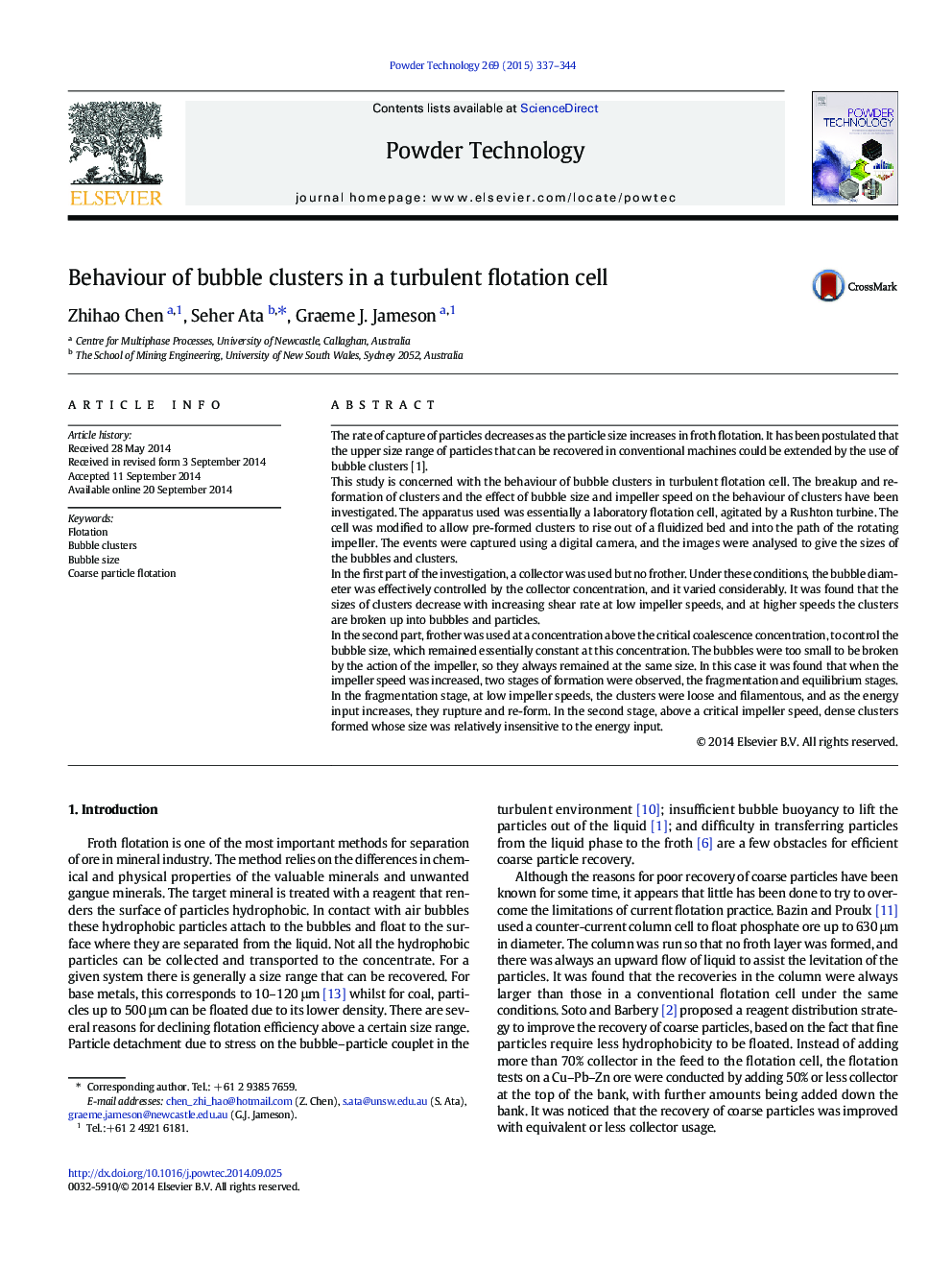| کد مقاله | کد نشریه | سال انتشار | مقاله انگلیسی | نسخه تمام متن |
|---|---|---|---|---|
| 235868 | 465651 | 2015 | 8 صفحه PDF | دانلود رایگان |
• The behaviour of bubble clusters under turbulent conditions was given.
• Two stages of clusters formations (fragmentation and equilibrium) were observed and explained.
• In the fragmentation stage, the clusters were loose and filamentous.
• In the equilibrium stage, dense clusters formed.
The rate of capture of particles decreases as the particle size increases in froth flotation. It has been postulated that the upper size range of particles that can be recovered in conventional machines could be extended by the use of bubble clusters [1].This study is concerned with the behaviour of bubble clusters in turbulent flotation cell. The breakup and re-formation of clusters and the effect of bubble size and impeller speed on the behaviour of clusters have been investigated. The apparatus used was essentially a laboratory flotation cell, agitated by a Rushton turbine. The cell was modified to allow pre-formed clusters to rise out of a fluidized bed and into the path of the rotating impeller. The events were captured using a digital camera, and the images were analysed to give the sizes of the bubbles and clusters.In the first part of the investigation, a collector was used but no frother. Under these conditions, the bubble diameter was effectively controlled by the collector concentration, and it varied considerably. It was found that the sizes of clusters decrease with increasing shear rate at low impeller speeds, and at higher speeds the clusters are broken up into bubbles and particles.In the second part, frother was used at a concentration above the critical coalescence concentration, to control the bubble size, which remained essentially constant at this concentration. The bubbles were too small to be broken by the action of the impeller, so they always remained at the same size. In this case it was found that when the impeller speed was increased, two stages of formation were observed, the fragmentation and equilibrium stages. In the fragmentation stage, at low impeller speeds, the clusters were loose and filamentous, and as the energy input increases, they rupture and re-form. In the second stage, above a critical impeller speed, dense clusters formed whose size was relatively insensitive to the energy input.
Figure optionsDownload as PowerPoint slide
Journal: Powder Technology - Volume 269, January 2015, Pages 337–344
